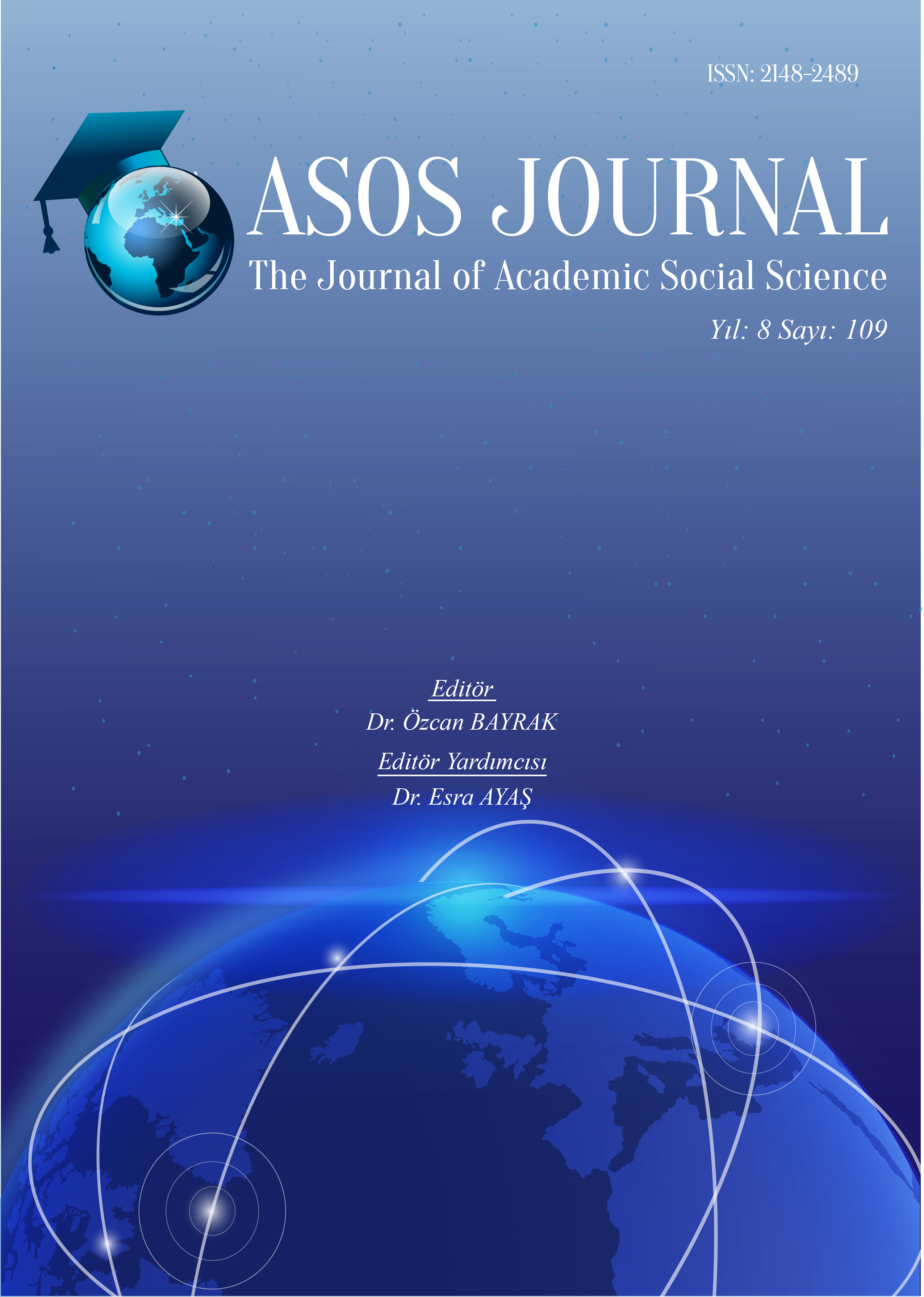S. RACHMANINOFF’UN “TABLEAUX ETÜDLERİ”’NDEN OP.39 NO.5 ETÜD’ÜNÜN FORM ANALİZİ, YORUM VE ÇALIŞMA ÖNERİLERİ
Author :
Abstract
Geç romantik döneme damgasını vurmuş Rus besteci ve aynı zamanda virtüöz piyanist S. V. Rachmaninoff’un op.33 ve op.39 “Tableaux Etüdleri” piyanistler tarafından sıkça seslendirilen ve icrası zor olan eserlerdendir. Bu çalışmada ilk olarak etüdün tanımı, tarihsel gelişimi, bestecinin müzik dili ele alınmış ve bu bağlamda “Tableaux Etüdleri”’nin içeriği hakkında bilgi verilmiştir. Her biri değerli olan bu eserlerden op.39 no.5 etüdü biçimsel, karakteristik ve piyanistik açıdan incelenmiştir. Çalışma kapsamında literatür taraması ve analiz yöntemleri kullanılmıştır. Bu çalışma ile piyanist adayının yorum bakımından farkındalığını arttırmak ve eğitsel anlamda katkıda bulunmak amaçlanmıştır. Ayrıca eserdeki oktav ve akor tekniği icrasında hakimiyeti sağlayarak uzun cümleleri bağlayabilmeye, aynı zamanda oluşabilecek teknik zorlukların üstesinden gelerek gerekli olan kol ve omuz gücünü piyanoya doğru aktarabilmeye ve son olarak müzikaliteyi ön plana çıkarmaya yönelik tavsiyelerde bulunulmuştur.
Keywords
Abstract
Op.33 and op.39 "Tableaux Etudes" by the Russian composer and virtuoso pianist S. V. Rachmaninoff, who made his mark on the late romantic period, are among the works that are frequently performed by pianists and difficult to perform. In this study, firstly, the definition of the etude, its historical development, and the musical language of the composer were discussed and information was given about the content of the "Tableaux Etudes" in this context. Of these valuable works, op.39 no.5 etude has been examined from a formal, characteristic and pianistic perspective. Literature review and analysis methods were used within the scope of the study. With this study, it is aimed to increase the awareness of the pianist candidate in terms of interpretation and to contribute educationally. In addition, to be able to connect long sentences by ensuring dominance in the octave and chord technique in the work, at the same time, by overcoming technical difficulties that may arise, to transfer the required arm and shoulder strength to the piano and finally to bring musicality to the fore recommendations were made.
Keywords
- Mimaroğlu, İ. (2007), Müzik Tarihi, Varlık Yayınları, İstanbul
- Cangal, N. (2008), Müzik Formları, Arkadaş Yayınları, Ankara
- Say, A. (2006), Müzik Tarihi, Müzik Ansiklopedisi Yayınları, Ankara
- MacKenzie, R.,(2018), Rachmaninoff’s Piano Works and Diasporic Identitiy 1890-1945: Compositional Revision and Discourse, yayınlanmamış doktora tezi, Western University, Canada
- Martyn, B. (1990) Rachmaninoff: Composer, Pianist, Conductor. Aldershot, İngiltere: Scolar Press
- Cook, S. (2012), The Piano Recital and Concepts of Artistic Synergy, Includes to Multimedia Projects: Picturing Rachmaninoff & Picturing Ravel, yayınlanmamış doktora tezi, Arizona State University, Arizona
- Bertensson, S. -Leyda, J., (2001), Sergei Rachmaninoff, A Lifetime in Music, Indiana University Press, Bloomingtom
- Gitz, R. J., (1990) A Study of Musical and Extra-Musical Imagery in Rachmaninoff 's "Etudes- Tableaux", Opus 39., yayınlanmamış doktora tezi, Lousiana State University, Baton Rouge
- Boosey & Hawkes, Rachmaninoff, S. (1970), Etudes Tableaux op.39 no.5 s.68-75, Russian Piano Classics, Authentic Edition, London
- Gramophone (2016). https://www.gramophone.co.uk/features/article/rachmaninov-s-etudes- tableaux-op-39-which-recording-should-you-buy (ET: 15.04.2020)





